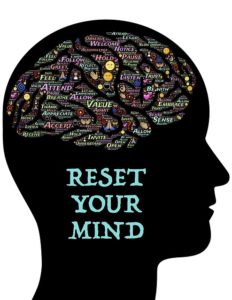|
|
|
|
|
|
|
|
 Corporate grade, reporting lines and membership of leadership teams in organizations often go together. But unbundling these components is a healthy exercise and a powerful rule in the maths of change.
Corporate grade, reporting lines and membership of leadership teams in organizations often go together. But unbundling these components is a healthy exercise and a powerful rule in the maths of change.
If you report to Joe – CEO, Divisional Director or Country Manager – chances are you share this with another eight or ten people who constitute Joe’s management team, executive committee or leadership team. This is what the organization chart says. Most management teams are formed by what the organization chart dictates; by an ‘accidental’ reporting line. Everybody reporting to Joe is de facto a member of his management team.
In medium-sized or large corporations, structures are very often cross- or multi-functional. Imagine a Business Unit composed of a large Sales function, a smaller Marketing function and then a series of support functions such as HR, Finance, Legal, IT and perhaps a very small Strategy Team. The leadership team of that Unit is bound to be composed of the Director of Sales, the Director of Marketing, the Finance Controller, Legal counsel, the Head of IT and the Head of the Strategy Team. I suggest that this happened by default, by the dictation of the organization chart and that nobody ever questioned it.
But a legitimate question may be, “does everybody need to be part of that leadership team?” Many people in business organizations would of course say ‘no’. But the way we sometimes solve the issue is by promotion/demotion. For example, we may say only directors are really part of the management team. This is managing by grade, not by brain and it’s not what I am suggesting.
Grade in the corporate structure (VP, Director, Manager, Head of) should not be a criterion of membership of a particular leadership team. Membership should be by invitation only. And only those who are in a position to add value to the role – whether they are in charge of a large part of the cake or not – should be invited.
It may be that, on reflection, the leadership team of the above Business Unit example should be composed of the Director of Marketing, the Director of Sales, the Head of HR and two Country Managers who do not report directly to the top leader of the Business Unit, but who are called upon to serve on that leadership team.
There may be alternative arrangements, but the principle is one of ‘by invitation only’. A principle that forces you to stop taking for granted the fact that membership will happen automatically or that grade or rank are a form of entitlement. It may be counterintuitive at first, but it is very effective. Much of the counterintuitive aspect comes from the fact that we tend to have pre-conceived ideas about how the organization should work. Sometimes these ideas carry flawed assumptions:
When you question management team compositions for the first time and, de facto, try to unbundle corporate grades, leadership and reporting lines, you will encounter some negative reactions and a few puzzled faces. But once this has been accepted as a legitimate questioning of the status quo, a breeze of healthy fresh air will start to flow through your organization!
Something that you may want to try as a model to follow is the Board of Directors. Though there are some differences between countries, a Board of Directors in public companies is usually composed of a few executives and some non-executive directors, who are either representing some shareholder sector or participating as members in their own capacity, background, experience or particular expertise. We have accepted this kind of designed composition as normal when it comes to the Board, but this is far from common for executive and leadership committees. But there is no reason why you could not mirror this, unless you want to stick to the default position because, “we have never done it like that.”
_________________________________________________
 This article is also featured in my latest book: Camino – Leadership Notes on the Road. [1]
This article is also featured in my latest book: Camino – Leadership Notes on the Road. [1]

Leading a meeting for the purposes of building a team (on top of achieving some business goals) may include a dose of ineffectiveness. It would be easier to be efficient, get on with things and let the ones who participate do just that, participate, allowing some silences, some nodding, and the reserved look of the more introverted. More inefficient is to ‘waste time’ to ‘engineer the time’ so that everybody participates. But, if you do so, eventually, and progressively, over a period of time, team meeting air time will be divided pretty much in equal parts between participants. This is the trick. Then, you’ll have created a safe place.
But you may have to orchestrate that. The wrong way: ‘Now, the ones we have not heard from, please speak up…’. And half of the room is now in the spotlight, with nowhere to hide.
The right way: ‘What do you think of this Mary, from your perspective as late newcomer to the team?’. Then, similar question to Peter. And John.
The first time you ask, it looks like politeness; second time it feels I am actually expected to contribute; third time, I am prepared, if still a bit embarrassed; fourth time, everybody does it, it’s actually pretty safe, this seems pretty egalitarian. Then you have a protected space.
Team building? Build your team with this simple rule. Distributed airtime for voices, spontaneous or engineered is a simple rule to create safe collaborative environments. I repeat, you may need to engineer this for a while.
Avoid a meeting with ‘audiences’: nobody at the back listening. Forget the ‘we bring Mary as a development opportunity’. If Mary needs a development opportunity, surely it must be beyond improving her hearing.
Declare all meetings as ‘hands on deck meetings’. Create a safe environment not by declaring it safe, but by proving that, day after day, it is safe because everybody is participating. And everybody is participating not because you inherited the colleagues with the most participative DNA, but because 3 months ago you started asking questions one by one: what do you think of this Mary, from your perspective as late newcomer to the team?’; John, I wonder if you would agree with this? Peter, could you think of a reason why this couldn’t work?
If you call these facilitation skills, I don’t mind. I call it social engineering with all minds and hearts put to use. I am more utilitarian than you.
_____________________________________________________________

Big impact with small changes within your reach. A process to think the unthinkable and achieve the unexpected, and all could be done tomorrow.
Management has its own possible disruptive ways.
In my book, Disruptive ideas [4], I define these ideas as those which ‘provide management alternatives that, if spread, can completely transform the way the organization works without the need for a massive change management programme’.
Each of them in its own right has the potential to create significant change, but the compound benefit of a few of them is a real engine of change and business transformation. These Disruptive Ideas are simple, have a total disproportion between their simplicity and the significant impact in the life of organizations, can be implemented immediately, usually have zero cost or are cheap to implement, are most likely to be contrarian and counterintuitive, have some risk of being trivialised or dismissed and can spread virally very easily’ These Disruptive Ideas are like controlled injections of challenge to the default positions of organizations. Amongst other things they question ‘the ways things have always being done’.
A Structured Way to Inject Disruptive Management Innovation
Here at The Chalfont Project we run a Disruptive Ideas programme [3] devised to challenge you, your management team, functional team, division…, to adopt many ‘impossible changes’ and to use the process to build a critical and healthier team. A total of 30 ‘ideas’ are dissected by your team(s) and your team members learn to assess them on their own merits, imagining the impact for the organization. We will create a process of critical thinking around the various ideas and a mechanism to challenge assumptions about their positive or negative merits. The outcome is a small set of chosen ideas with the potential to create high impact immediately, and a clear plan of commitment and accountability. This is an immersive crash course in management innovation and a powerful team building and renewal plan. You may or may not need us beyond the initial intervention in order to help implement the changes and track their impact.
 If any of these are a good picture of your organization, you need to add ‘critical thinking’ to the water supply. Or a more practical alternative. Doing nothing is not an option (and very uncritical).
If any of these are a good picture of your organization, you need to add ‘critical thinking’ to the water supply. Or a more practical alternative. Doing nothing is not an option (and very uncritical).
Test yourself, your organization. Do any of these apply?
If you recognise one of them, dig deeper. Two, is becoming serious. Three, explore your medical options. Four, Houston you have a problem. Five or over, you need to stop and seriously look for ways to add ‘critical thinking’ to the water supply. If ten out of ten, you are living in a mental cuckooland, an artificial reality and, facing a high risk to your health. If you are successful, you are successful despite yourself.
PS. Critical Thinking can be taught, in the same way that your body can be reshaped by going to the gym on a regular basis.
_______________________________________________

At The Chalfont Project [6], we have crafted a short intervention on Critical Thinking: [3]
In this short intervention we teach you and your team Critical Thinking methods and questions that will help you focus your time on the things that matter, make good and fair decisions and escape the dangers of human biases. We will also help you apply these methods to your everyday challenges in your organization.
You will learn about strategy acid tests and many mind fallacies, including various biases, and the practical Critical Thinking methods that you can use to address these.
This high impact, short intervention will:
For those of you not yet familiar with the change. Daily Thoughts has evolved. New name and format. Rather than daily, I will share with you a weekly focus on culture change, leadership and organizational design fit for the future.
This week, I continue my focus on behaviours, looking at the importance of habits in creating meaning when it comes to large scale behavioural change.
In my organizational consulting work, and in behavioural terms, I am very used to being told, and challenged, that there is no point focusing on behaviours (as we do with my team) if people ‘don’t mean it’. The conventional wisdom is that meaning is first (intellectually, from your heart) and then behaviours are the output, the consequence; that behaviours by people who ‘don’t really mean it’ are simply useless.
There is a logic behind this. It is the Homo Sapiens logic. The well regarded view-of-our-selves that makes us feel superior, in full control of our actions.
This is, however, in contradiction with reality, where, every day, we all have plenty of things we do as habits, which would be very difficult to associate to a ‘previous meaning’.
We do things, we establish routines, and we don’t ask ourselves whether we mean them or not.
We just do them.
This is important because behaviours are copied (Homo Imitans) and therefore good routines and habits, if collective, are likely to be copied and multiplied. I have just described culture in the above line.
With my behavioural hat on, I prefer, a thousand times more people establishing some habits, adopting some behaviours, whether they mean it or not (and see afterwards the consequences of the circumstances that they themselves have created) than being stuck looking for the cognitive full understanding first. Translation: for example, in large scale organizational change, start adopting some key behaviours, creating some critical mass and then ‘find the meaning’. I know that this is unconventional and a bit counter intuitive in traditional organizational development. I also know that Homo Sapiens readers interpret this as a rejection or dismissal of cognition, reflection and critical thinking. Far from it. But in organizational terms, we cannot simply wait for the sequence ‘understanding-internalization-emotional integration-aha!-action’, for everybody on the payroll.
Routines and habits create meaning, at least as much, if not more, than the other way around.
People going to the gym every day become more aware of their health, more than people aware of their health decide to go to the gym. Religious rituals create belief, more than belief creates religious rituals.
In large scale behavioural change, define key behaviours and make them live and multiply them; and don’t worry about whether people ‘mean them or not’. Meaning will come.
I know Homo Sapiens do not like this, but I am writing here on behalf of Homo Imitans. [4]
________________________________________________________________________________________________

This webinar, part of a series of 5 webinars, debunks uncontested assumptions in this area and uncovers the alternatives, whilst considering why this debunking of myths is even more relevant today in the current exceptional environment.
To drive change which makes organizations fit for the future, we must think and act differently in the management of our organizations, particularly in the areas of change and transformation. We must abandon change as something imposed in favour of people becoming true agents.
Organizations that have mastered this have been ‘fit for the future’ for a while!
Daily Thoughts has evolved. New name and format. Rather than daily, I will share with you a weekly focus on culture change, leadership and organizational design fit for the future.
As we move into a new month, my focus is now on behaviours. “There is no change without behavioural change”.
You can map new processes and re-arrange the organization chart. Install a new corporate software (ERP, CRM, etc.) and explain to people why this is good and necessary. Create a massive communication and training campaign and make sure that everybody has clearly understood where to go. Perhaps you’ve done this already and noticed that many people hang on to the old ways. That is because there is no change unless there is behavioural change. It is only when new behaviours have become the norm that you can say that real change has occurred. If you want a new culture, change behaviours. Cultures are not created by training.
You need to uncover the non negotiable behaviours
The trouble with value systems is that, very often, they have no proper translation into pragmatic and visible expectations that can be rewarded or not, accepted or not, and into something with unequivocal meaning. I have just defined ‘behaviours’.
For those of us sitting with one foot in the Behavioural Sciences, the use of the term ‘behaviour’ is far more restricted than the average often seen next to many vision and mission statements. For many years now, since the word ‘behaviour’ became more fashionable in the corporate and HR language, behavioural statements have populated Values/Mission/Vision sets, added there with the hope of increasing their ‘practical weight’.
But adding or labelling something as ‘behaviour’ does not make it one. Many behavioural translations of Values remain trapped into circular explanations, saying the same with different words. ‘Honesty’ as a value, as an example, could be ‘translated’ and explained as: ‘Act with sincerity and authenticity; be candid and open; create trust’. Which explains absolutely nothing about honesty, but looks like a solid line of ‘explanations’. Just hope that the consultant’s bill was not too high.
Creating a set of behaviours that are visible, reward-able, concrete and, above all, have unequivocal meaning, is key to being able to use them as a currency in the organization. (Honesty, sincerity, authenticity, candour, openness and trust do have equivocal meaning. None of them are behaviours).
Behaviours create cultures. Master behaviours, agree upon them, declare the non negotiable ones, spread them, and you’ll get culture.
________________________________________________________________________________________________

Behaviours change culture, not the other way around. The spread of behaviours is the real source of social change. Behavioural imitation explains how social change happens, how epidemics of ideas are formed, how social fashions appear and how company cultures shape and reshape themselves. This book addresses Viral Change™ in action, showing that the more primal ‘Homo Imitans’ is still a powerful force. Understanding how social, behavioural infection works is the basis for the orchestration of any ‘epidemic of success’, be it a successful change inside a firm or a counter-social epidemic to tackle negative socio-macro phenomena.
In case you missed my first edition [9], sent out last week, Daily Thoughts has evolved. Now a new format, rather than daily, I will share with you a weekly focus on key culture change and behavioural science themes. This week I continue with my focus on leadership.
Future issues will cover:
_________________________________________________________
Here’s a brief snippet of my latest thinking on Employee Engagement and how leadership fits into the conversation. Use the link below to read the full article.
Company culture has suffered a similar set of problems when a reductionistic approach is used: culture equals employee engagement and employee engagement equals the score in the employee survey (because we have thermometers). Here is a bit of a circular definition which is real (I am not making it up): definition of Engagement is whatever you have decided Engagement is and you have decided to measure via an Employee Engagement Survey. In summary, Employee Engagement is whatever the Survey says. And it says it with a number, which is very handy, but it’s time to abandon this.
It’s surprising how, in many areas of the company business, we are used to using a set of parameters to define what is going on – and it’s pointless to focus on employee survey results only, out of context and in isolation from a wide set of ‘cultural parameters.’ The problem is not that any sensible leader would agree with this, but that the same sensible leaders may spend a lot of time ‘on the scores’ just after agreeing that it does not make a lot of sense. Leaders must reflect on their role in culture change, and understand that when it comes to ‘explaining culture,’ the single indicator and the single ‘employee engagement’ does not make sense anymore.
________________________________________________
Leading Culture Change [11] – A conversation between Gert De Winter, CEO of Baloise Group, and Dr Leandro Herrero, CEO of The Chalfont Project.
In this video [11], I talk to Gert De Winter about the challenges and solutions of Viral Change™ in action. We reflect on the role of leaders in culture change and on how Viral Change™ contributes to culture change in Baloise Group.
________________________________________________
For more on Leadership…..

Camino – Leadership Notes on the Road
A collection of notes on leadership, initially written as Daily Thoughts. Camino, reflects on leadership as a praxis that continuously evolves.
I have not counted the number of TV shows, either side of the Atlantic, that are based on individual competition, but there must be big numbers. Competing will get you out of a jungle, or will win you a music contract, a best baker award, a bride, a groom, cash, a job, or just a title of Winner of this Year’s Whatever.
A fraction of these contests will entail collaboration as a means to winning. Even when collaboration is part of the show, such as in The Apprentice, contestants at the end are entitled to blame each other as a means to saving their own skin. (The Apprentice is, in my view, the worst public projection of what business is really about).
We are creating a world of ‘contestants’, always competing on some form of battleground: the TV studio, radio, the school system, the company. It may be soft or hard Darwin, but it is Darwinian. Many people will argue that this is not bad, that this is life after all, and that ignoring ‘competition’, for example in the school, is not doing kids any favours. So, it’s a vicious circle in which we prepare kids to win (more than to know, to grow, to live, to love or to contribute, or to just be), which in turn prepares (some of) them to join a company to… compete, which, I suppose, makes the company… competitive.
No wonder a survey of 2000 adolescents in the UK run by The Guardian a few years ago, showed that the number one concern of this pool was ‘fear of failure’ (followed by bullying, pressure to be thin and depression).
Slight problem here. The world is interdependent. Nothing that we do today can be done out of independence, no matter where you sit: the company, society, geopolitics, business. The key competence of the Century is actually, collaboration, not competition. The laws of collaboration and competition are different. We have a societal bias for one (competition) and we desperately need tons of the other (collaboration). I have used the term ‘Competing on Collaboration’ many times in my consulting life. It’s not a clever attempt at playing with words. We need to master this. It is the top fundamental organizational and personal competence of today.
Yes, there are, attempts to inject collaboration in schools and organizations via training or gamification, but they are timid and powerless compared with the enormous pull of competition.
As leaders we need to reinforce, reward and recognise collaboration and stop reinforcing, rewarding and recognising the heroic individual contributions and achievements. It’s hard when faced with the super hero, the hyper-achiever, with a stockpile of stock options and bonuses, to say: ‘Congratulations but you don’t get the bonus. You did a great, fantastic, incredibly successful job …on your own.’
We are hitting ‘culture’, again. That means choices, for example, how people achieve what they achieve.
________________________________________________________________________________________________
For a preview – take a look at: Camino – Extract Chapter 1 part 2 [12]
Order your copy now
Amazon.co.uk [13]
Amazon.com [14]
Waterstones [15]
Barnes & Noble [16]
and more….
To find out more:
Watch the book launch on demand webinar [17]

We have been exploring briefly in the last days the Steering system of the company under the formula: (1) Space in the World (Purpose) + (2) Core Beliefs + (3) Non-negotiable Behaviours [18] + (4) Organization Logic (Basic People Algorithms) [19] = (5) Company Constitution [20]
A few words on Core Beliefs:
This terms substitutes Values. As I mentioned in the first Daily Thought [20] of this miniseries, we can change the labels of things gratuitously or for a purpose. There is noting wrong with Values, not a bit. Unfortunately, the language of values attract the common suspects of Honesty, Integrity, Teamwork and Accountability that are of the unhelpful type, because they also are of the type ‘difficult to disagree with’.
I have no problem with Value statements but my behavioural hat needs two things: one is behavioural translations and the other is beliefs translations.
The behavioural translations may find their way into ‘Non-negotiable behaviours’, the subject of Friday’s Daily Thought [18]. The belief piece of the Steering system needs to articulate, err… beliefs! ‘We believe in Integrity, honesty and Team work’ is not a good articulation of beliefs. I believe in them too. I hope you do as well.
A core belief system may read like this (ignore either the stiffness or the laxity of the language, I’m not doing the literature for you, just showing the grammar).
These are practical and real examples. Compare these ‘core beliefs’ with more traditional value explanations of the type I describe in a previous Daily Thoughts.
Again, this work on (a) belief systems, (b) non-negotiable behaviours, (c) organizational logic and (d) ‘space in the world’ is not something that can be done on the back of an envelop. I will require several iterations and a lot of critical thinking to avoid the simple playing with words. However, the effort is worthwhile.
Space in the world
As for the ‘Space in the world’, then concepts force us to go beyond the traditional mission and vision to articulate our uniqueness, if we can. To refer to the usual suspects, Apple occupies a ‘design space’ (more than a technology one); Google occupies ‘a data space’ (not just a search one); Amazon occupies a ‘customer space’, perhaps a ‘technology space’, not a store space. To continue with other suspects, Zappos has positioned itself in the ‘happiness’ space and progressing towards the ‘self-management’ space, much more than selling shoes or other merchandises. Valve may produce video games, but it has gained a position in the ‘self-management space’ as well, so is Morning Star, a producer of tomatoes in California, which receives visitors from all over the management world for anything but tomatoes.
I have given you a helicopter trip on something that requires an intercontinental flight. I am not even sure I have done any justice to the ideas, ideas very close to my heart and my daily consulting work as organizational architect.
I have tried to open a window to what may seem a simple change of words, and in reality is a totally different frame. I must leave it here or the risk of another helicopter ride will increase.
I am advocating these shifts:
From Mission and vision to finding your ‘Space in the World’ (Purpose)
From traditional Value systems to the articulation of Core Beliefs AND Non-Negotiable Behaviours
Adding Organizational Logic (Basic People Algorithm) underneath the traditional Governance
Putting all together as a Company Constitution.
Although this work has been going on for years, I am now packaging and accelerating these processes in a systematic way and in the shortest possible time.
________________________________________________________________________________________________
Contact The Chalfont Project team [5] to find out how we can support your business.
What we do:
The trouble with value systems is that, very often, they have no proper translation into pragmatic and visible expectations that can be rewarded or not, accepted or not, and into something with unequivocal meaning. I have just defined ‘behaviours’.
For those of us sitting with one foot in the Behavioural Sciences, the use of the term ‘behaviour’ is far more restricted than the average often seen next to many vision and mission statements. For many years now, since the word ‘behaviour’ became more fashionable in the corporate and HR language, behavioural statements have populated Values/Mission/Vision sets, added there with the hope of increasing their ‘practical weight’.
But adding or labelling something as ‘behaviour’ does not make it one. Many behavioural translations of Values remain trapped into circular explanations, saying the same with different words. ‘Honesty’ as a value, as an example, could be ‘translated’ and explained as: ‘Act with sincerity and authenticity; be candid and open; create trust’. Which explains absolutely nothing about honesty, but looks like a solid line of ‘explanations’. Just hope that the consultant’s bill was not very high.
Creating a set of behaviours that are visible, reward-able, concrete and, above all, have unequivocal meaning, is key to being able to use them as a currency in the organization. (Honesty, sincerity, authenticity, candour, openness and trust do have equivocal meaning. None of them are behaviours).
Non-negotiable behaviours’ is a term that we use all the time in our consulting work to emphasise their weight and importance. These non-negotiable behaviours need to be crafted in a way that is as universal as possible, the same rule that applies to the Organizational Logic (algorithms) that I mentioned in the previous chapter.
Similarly to the criteria for Algorithms, there are not (they should not be) a long set of non-negotiable behaviours. Any long set is suspicious.
To recap the formula of the Steering system is: (1) Space in the World (Purpose) + (2) Core Beliefs + (3) Non-negotiable Behaviours + (4) Organization Logic (Basic People Algorithms) = (5) Company Constitution
The one to tackle next is “Core beliefs’.
________________________________________________________________________________________________

Many companies operate under some sort of ‘Mission and Vision’ framework, often also accompanied, or preceded, by a statement of values. This is fundamental to good governance. It has however become such a ‘default position’ that the model has aged, and, in the process of growing its own grey hair, it has endured a fair dose of abuse, criticism and cynicism.
There are hilarious websites that can create mission and vision statements for you via simple permutations. Those missions and visions often seem undifferentiated and equally applicable to both, your hi-tech business and your neighbourhood hairdresser.
The mature ‘vision and mission system’ has created its own memes: self-contained sentences that have a life of their own. ‘Exceed customer expectations’, ‘maximise shareholder value’ and more recently, ‘positive impact in the communities we operate ’ are examples of them.
There is nothing intrinsically wrong, nor that I particularly dislike the old frame. But I have found the need to move on to more contemporary frames. To the cynical eye, it may look like simple semantic tricks. To the clinical eye, you will see that it is definitely more than that, and a different frame altogether.
My hope is that people don’t stop at the possible attraction of the freshness of the language. Conceptually this is not entirely new, but it pushes people away from the default position, whilst pointing to the direction of a perhaps entirely new game. At least this is how I coach and help my clients.
The frame I am now using with my clients reads like this:
(1) Space in the World (Purpose) + (2) Core Beliefs + (3) Non negotiable Behaviours + (4) Organization Logic (Basic People Algorithms) = (5) Company Constitution
I will deal with each piece of the formula separately in a few Daily Thoughts, starting at the bottom and going backwards. Then I will put it all back together.
The last bit (5) is simple, to explain here briefly. Why ‘Constitution’? I think that the model of Citizenship is more appropriate than Employee-ship in the modern company. It has the potential ability to host better things such as activism, responsibility (individual and collective), rights, vision of the common good and overall purpose. ‘Constitution’ has a more powerful frame to express the purpose, the reason for existence and being the home of the rules of the game.
There are two basic reasons why we change the labels of things. One, because we can (for the sake of it, or fashion, or boredom or a colossal branding consulting bill), or because we want to steer meaning into a new direction. I hope the latter prevails here.
More later. Tomorrow I am moving backwards in the formula, and I will introduce ‘The People Algorithms’.
Do come back.
______________________________________________________________________________________________________________________________________

If you want to have a conversation about the future of work, don’t start with hybrid vs. non-hybrid, flexible vs. non-flexible, work from home vs. work from anywhere. It’s the wrong start!
The real conversation is about the culture you want or need. Company culture is the petri dish where everything grows. The culture has workplaces. Focus on culture. This is the real driver. This is the true conversation.

Every morning in my neighbourhood there is a small window of time when traffic becomes chaotic, slow, painful and frustrating. It’s called the school run. Around here, many kids are taken to school by car, by their parents, adding that traffic to the one of public transport, and school buses for the non-motorised kids. The situation is as predictable as night and day.
The streets in this area are quite typical of an English town: narrow, busy, occupied by tired looking cars tightly parked and hardly suitable for two-way traffic. The English have mastered a silent negotiation of street space with an unwritten driving code of eye contact, followed by the raising of a finger (which means thanks, there are several other types) to decide who goes first. Very civilised but still chaotic. This slow motion is part of the daily morning routine.
At the same time, in the middle of this infuriating and impossible traffic, the local municipal council decides to send the bin lorries out (or garbage trucks, or dustbin lorries, or waste collection vehicles if you want to be more sophisticated). The traffic then transforms itself into a funerary procession with dozens of cars unable to overtake and in slow crawling mode behind that very systematic collection of multi-coloured bins by men in orange or yellow suits.
Why then? Why at that time of the day? Well, it’s a stupid question. They are just doing their jobs, so they need to be respected. It is what it is. The dustmen are doing their jobs, the municipal council is doing its job and the planners of such a clever strategy are doing their jobs. And that is the problem. Doing your job blinds you completely to other jobs, other problems and other people. Even life.
The unpleasant officer at Security in the airport, is just doing her job. The nasty manager having a go at the employee, is just doing his job. The senior leader restructuring on the spot with no warning, no prisoners, is just doing her job. The reader of a script in a call centre asking you impossible questions, is just doing his job. The assistant pharmacist (in the UK) asking what other medicines you are taking when buying that medicine, even if she has no clue about the implications of any answer, is just doing her job.
Have you noticed how many people around you are just doing their jobs, and, implicitly, they are asking you for your acceptance, compliance, obedience, silence, forgiveness and even consideration for their hard work? Have you noticed that most people who are not helpful to you are just doing their job?
I am scared of people just doing their jobs. They usually have no consideration for my job, or your job, or the sum of all jobs. It’s impossible to do a good job if you just do your job.
________________________________________________________________________________________________

At The Chalfont Project, we have crafted a short intervention on Critical Thinking [23]. In this short intervention we teach you and your team Critical Thinking methods and questions that will help you focus your time on the things that matter, make good and fair decisions and escape the dangers of human biases. We will also help you apply these methods to your everyday challenges in your organization.
You will learn about strategy acid tests and many mind fallacies, including various biases, and the practical Critical Thinking methods that you can use to address these.
This high impact, short intervention will:
The cost of authenticity, of being yourself, is zero. In theory, the cost of pretending you are somebody else is higher. And the cost of doing, always higher.
Being you does not cost you much and always pays off. At least in the long term. And I am not sure it’s worth the effort of pretending differently in the short term.
People often spend a lot of time and effort pretending they are somebody else, so that they can fool others. It is a choice, of course, but I would not recommend it. It ends in tears many times.
If you are hired by what the employer thinks you could be, would be, should be, or will be, you’ll get a bad deal.
If you are part of a leadership team of some sort because somebody (perhaps the top leader) has an idea of your persona and expects you to be that one, it will cost you if it means pretending
If you spend your life outside you, in semi-permanent exile, playing somebody else’s character, you will come back home – if you ever do – exhausted.
There is quite a lot in the self-help literature that recommends you mimic some heroes, or role models. It has contaminated business wisdom as well. So for example, how could I ‘imitate’ Richard Branson, or the late Steve Jobs. Believe me, bad idea. Don’t. By all means read about them, admire them if you wish, and imagine their persona, but you are wasting your time imagining and pretending that you could be their cloned brother.
Heroes are more useful when distant. When the energy is not wasted in pretending that you could be a clone. This, by the way, is so obvious that should not deserve mentioning. But I think that often , unconsciously, we want to pretend that we are ‘another’, a different one. Very high cost.
When I look back, I want to see the one who was me, not the one in exile, in nomadic quest for acceptance, or coming out of a political correctness course.
I wish the accountants could tell us more about the zero cost of being, it’s fantastic ROI and the silliness and cost of pretending to be a different character. As the old saying reminds us, we are so busy doing that we don’t have time for being. Another cost of busy-ness.
As philosophy goes, this is as deep as I can go today.
I recommend the highest ROI that comes from being the one you are supposed to be, as opposed to the one others want you to be, or an ideal being that is only real when in exile from your inner self.
________________________________________________________________________________________________
For more thoughts on Leadership, you can purchase my latest book…..
This is a collection of notes on leadership, initially written as Daily Thoughts, which started years ago as a way of talking to himself. Camino, the Spanish for road, or way, reflects on leadership as a praxis that continuously evolves. Nobody is ever a leader. Becoming one is the real quest. But we never reach the destination. Our character is constantly shaped by places and journeys, encounters and experiences. The only real theory of leadership is travelling. The only footprints, our actions. The only test, what we leave behind.
Watch the Camino [17] webinar, where I discuss this book and my thoughts on Leadership.
Visit BOOKS [4] to get your copy from Amazon now!
or
You can now read extracts from Chapter 1 [1].

Managing uncertainty is something our brain loves to do. And it loves even more to be helped.
At macro-macro-level, Theories-Of-Everything do the trick. Very elegantly, Nobel Prize (Medicine) Jacques Monod (1910 – 1976) [29], whose Chance and Necessity: Essay on the Natural Philosophy of Modern Biology made a significant impact on me as a young doctor in my 20s, described as ‘mythical ontogenies’ those that explain everything from religious beliefs to Theory of Man.
But, on a small scale, we can see this in every little piece of uncertainty in daily life: the difference a little decrease of that uncertainty can make is not to be ignored. Behavioural Economics, to its credit, understands this very well and creates ‘nudges’ that can, in their own simplicity, travel a million miles between the certainty and uncertainty territory, and, in doing so, decrease our anxiety and tell the brain, it’s ok, relax, it’s not that dark out there.
Here are some examples
Each second part alternative contains that little extra piece of info that tells the brain to stop worrying.
We could construct an entire management system on this basis. The zero cost question is, how can I decrease uncertainty by 10-20-50%? Perhaps 100%, because how much you need that delta reduction and how much I need it, may be very different. In other words, the anti-anxiety effect is not linear, the difference between ‘from flight delayed, to flight delayed by 45 minutes; new update in 10’ may be for me the 100% difference between complete panicking and redirecting my attention to key things with zero anxiety.
In fact, I would go further and say that, delta reduction is far more effective than a full blown ‘I have all the data’. Uncertainty avoidance (a feature described as characteristic of some national cultures) does not require full avoidance, just a dose of decreasing, that magic delta. The pursuit of total uncertainty avoidance is futile. Unless of course you want to use the management equivalent of Monod’s mythical ontogenies (I have an answer for everything, what is the question?): these are all the answers, these are all the Gantt charts, this is what reality will look like on Wednesday 27 in the afternoon. A management practice that comes well below the weather forecast in efficacy. But could also be very effective even if wrong.
________________________________________________________________________________________________
What people are saying…
“I really like the way that this excellent masterclass successfully challenges our traditional approaches to change leadership. The content is both impactful and thought provoking, and there is no doubt in my mind, that Leandro has changed my way of working.”
1: The ‘annual’ measurement is artificial. It works for budgets and accountants but not for much more. If a project is a 17 month project, why do you need a measure of performance at month 11 or 12? Why not monthly? Weekly? At month 17? [In Safety, if you have a fatality in June and another in August, this does not make it a 2/12 of a problem].
2: Performance appraisal is a constant dialogue. When you do that, the picture is built automatically. If so, performance management is simply management, not an extra ritual.
3: Performance appraisal 2021 version is two ways: management about employees, employees about management. One way only? 50% of the picture.
4. The best thing you could do, in any case, is to consciously de-couple the process for compensation and bonuses from the one for performance appraisal. You’ll still have to decide about compensation and reward, but this should be based upon a continuous build up over the year. De-dramatize the annual one off ritual if you insist in keeping one. It should be just another data point.
5. Data by Bersin/Deloitte showed that 89% of managers think that the performance management process ‘is not worth the time put into it’. Yes, you’ve heard, 89%. That is 11% thinking it’s OK. You?
6. Performance appraisal should be focused on (a) understanding success and failure, (b) coaching and (c) action/development. This cannot be done once a year. Not even twice a year. Is your system fit for purpose?
7. Punctuating performance management in particular calendar slots (mid year appraisal in June, end of year is November) paralyses the organization on June and November. Don’t fix times from the top. Managers should dictate their tempo and leaders should keep an eye on it. Again, this should be unbundled, time and process, from pay raises and bonuses.
8. Substitute ‘your Performance Appraisal’ for ‘Our performance Assessment’. We are together in this. A manager is not a father, or a benign god. Managers are human (most of them), they are not absolute holders of the truth.
9. Focus on tracking success and failure, assessing individual and group contributions, recognition and planning forward for success. The current systems are probably unsuitable. There may be digitally reborn but still mechanistic.
10. Performance assessment/appraisal needs to be reinvented. A 360 degree feedback plugged in, does not solve the problem. It only creates a pseudo-democratic and pseudo-scientific monster.
If you agree with three or four out of the 10, you need to act. Call time out and re-invent. If you agree with more than three, why are you still doing it the old way? Change now! If you don’t agree with any, maybe your company is called Annual Performance Management Suppliers, a company founded in 1809 (the year Frederick Taylor published “The Principles of Scientific Management.”) Just kidding.
I am not advocating scrapping performance management. I am advocating reinventing it and getting rid of the word performance. Then we will be confronted with the real issue: reinventing management.
________________________________________________________________________________________________

There is a type of manager/leader who masters the art of listing what you don’t have. We don’t have the money, we don’t have the size, we don’t have a strategy, we don’t have proper systems, we don’t have governance, etc. It is an art in itself, the art of negative accounting.
These Negative Inventory Managers are dangerous because they hardly provide an answer to the questions, or a path to ‘having’ all those things you don’t have. But they are good at the diagnosis of the obvious. By repeating the negative, they create a bigger negative conversation.
I have met many Negative Inventory Managers in my life and, consistently, they have never succeeded in their organizations. Or at least not for long.
I have seen them in small or medium size entrepreneurial organizations which have hired people with all skills and track record on paper, all achieved in a big company with a big support system. They joined because of the entrepreneurial flavour and ethos offered. They knew the difference. They got very excited. The employer got very excited. Six months later the love affair falls apart because they can’t navigate in the new environment. They have spent those six months as Negative Inventory Mangers: we don’t have this, we don’t have that, so I can’t do a ‘proper job’. Goodbye. They leave behind negative vibes.
Negative Inventory Managers are the anti-builders. Building is hard, diagnosing the gaps and the ‘lack of’ is easy.
The worse thing you can do with Negative Inventory Managers is to give them an audience. And they often hijack the entire organization particularly if there is a little bit of a morbid tendency to feeling a little bit miserable. And some organizations like that.
The best thing you can do is to challenge them. Reframe the conversation: how can we make X,Y,Z happen? How can we build A,B,C?
The occasional Negative Inventory Manager may be inevitable, but the permanent role type is pure toxicity. Their toxicity is spread by paying too much attention the them. No attention, no chance for the negativity to spread.
The treatment is either protection, quarantine, or surgery.
Protect yourself if you can by perhaps having a better recruitment process, more sophisticated, of higher predictive value.
Isolate them if they are already infecting many with the ‘problem-is -that-we -don’t-have’ virus. Don’t provide an audience or air time.
When all fails, well, send them back to the Land of Milk and Honey that they left in order to join you. They are really missing them over there.
________________________________________________________________________________________________
What people are saying…
“I really like the way that this excellent masterclass successfully challenges our traditional approaches to change leadership. The content is both impactful and thought provoking, and there is no doubt in my mind, that Leandro has changed my way of working.”
Following on from Wednesday’s [32] proposition, the new disciplines of management, ‘The New Classics’ are these 10:
1. Behavioural Economics
2. Political Marketing
3. Network Theory
4. Viral Change
5. Social Movements
6. Social/Corporate Anthropology
7. Digital Activism
8. Generation (and urban) anthropology
9. Social Media technologies
10. Critical Thinking
I introduced on Wednesday [32], very briefly, 1 and 2
As before, I will mention one single area in each, as an example, from where we can draw immediate learning and applications. It’s just one example of a rich learning from all of them, and by focusing on one aspect, I am conscious of trivialising too much. I am pointing to tips of icebergs.
3. Network Theory. Amongst other things it tells us that a Bell curve, normal distribution in the organization does not exist other than in an HR mind. Everything inside the organization (a network) follows a Power Law distribution. For example, there is a relatively small number of people with high influence and connectivity, and a large number of people with very little influence and connectivity. This can no longer be ignored. Don’t try to find a Bell curve of influence. It does not exist.
4. Viral Change. [21] This is a trans-discipline that explains how to mobilize people: bottom up (not top down), behaviours-based (not information based), peer-to-peer (not hierarchical channels), bottom up storytelling (not top down ‘stories from above’) and Backstage Leadership, the art of supporting from the back, not upfront with PowerPoints. Plenty of this here.
5. Social Movements. Organizational culture is an ‘internal social movement’, or isn’t. So we’d better learn from people who have run these. Key learning: you have to cater for a multitude of motivations, but be very clear about the non-negotiable (behaviours). In traditional management, our obsessive ‘alignment’ needs to be redefined. Also, ‘Rebels’ need a cause and a direction, as opposed to the fashionable thinking that having passionate people, rebels and mavericks in a room, will change the company. Yes, but you may not be able to recognise it.
6. Social/Corporate Anthropology. Hardly new. However, life in the organization can be understood in terms of rituals, tribes, identities, kinship and other anthropological concepts. And, suddenly, it all makes sense! Anthropology is the forgotten discipline in management. A beautiful discipline if it were not for the anthropologists who often speak an incomprehensible language. Corporate Anthropology is also a forgotten discipline, more complex than doing a PhD on South Seas tribes to be followed by a post in consumer behaviour for Unilever.
7. Digital Activism. This teaches us about rapid mobilization and large scale effects. Also about the differences between champions, ambassadors, advocates (and click-tivists), and activists. These are differences that we don’t understand or use well in the traditional view of corporate life, where these concepts have been commoditised. I don’t want more ambassadors. The company is not an Internal Diplomatic Service. Personally, give me activists, who actually act. But the only time we use the term (other than in Viral Change [21]) is to refer to employees engaging externally on behalf of the employer. Activists are not ambassadors who click and ‘like’ and say how good my company is.
8. Generation (and urban) anthropology. There is less difference between a Chinese teenager and a French teenager, than a Chinese company and a French company. In organizations we are still stuck in rather old ‘cultural (national) distinctions’ and frames which don’t predict much anymore. How you handle Millennials, for example, is today more important than understanding ‘German’s power distance’.
9. Social Media technologies. Digital is not a suit of toys. We need to distinguish between building an audience and building a community, between push and pull mechanisms, and the differences between connectivity and collaboration.
10. Critical Thinking. [23] Two things here: (1) It can be taught, and (2) in the traditional management of organizations we are in very short supply. At the very least it is about (a) learning the art of questioning, how to be disciplined in inquiring and (b) avoiding/managing fallacies and biases. It’s a praxis. It gets better and better when practising and when establishing some of these practices across the organization, at a scale.
________________________________________________________________________________________________
Renew, transform, re-invent the way you do things. Organizations today need to look at better ways, alternative and innovative ways to change the status quo. It’s not about being radical for the sake of it. Only if you try radical ways will you be in a better position to find your ‘fit for purpose’ goals.
As Michelangelo said: ‘The greater danger for most of us lies not in setting our aim too high and falling short, but in setting our aim too low, and achieving our mark’. He was a radical in the way we talk about it.

_____________________
At The Chalfont Project, we have crafted a short intervention on Critical Thinking [23]:
In this short intervention we teach you and your team Critical Thinking methods and questions that will help you focus your time on the things that matter, make good and fair decisions and escape the dangers of human biases. We will also help you apply these methods to your everyday challenges in your organization.
You will learn about strategy acid tests and many mind fallacies, including various biases, and the practical Critical Thinking methods that you can use to address these.
This high impact, short intervention will:
A true story. A health care worker is truly struggling to do her work and caring for a son who has had a crash accident. She has no other means but finding time here and there for a first stage of intense rehabilitation that entails travelling to a distant centre. It just does not work.
Before her manager becomes aware, he has a visit from some of her colleagues who hand him a list of names. All are names of people who want to donate one day of their annual leave, their official holiday, to their colleague in serious need. In total, the number of days that could be accumulated was around a third of a full year. This is the number of people who had signed the list and offered one day of their holidays.
An HR logistical nightmare, but it happened.
I don’t know about you, but when I see human generosity in action, I reconcile myself with the human condition. And sometimes I need that reconciliation big time.
This collective action did not reach the front page of a newspaper. In fact, many like me only became aware of it through the context of one of our Viral Change [21]™ programmes where we were looking for real stories of kindness and generosity. The story is true, because it was told by the manager who received that list, a Viral Change [21]™
Champion himself.
It never occurred to me that this could happen. I wonder how many other stories of solidarity may happen in our work places. Many may be invisible. At times it seems that we have reduced all to money. Putting money in an envelope, noble as it is, is actually easy. Giving your name to offer a day of your holiday is less. Those having the idea of collecting and organising are real heroes.
Once again, the best possible currency we have: our time. The most precious and scarce one.
________________________________________________________________________________________________
In the previous Daily Thoughts posting, [33] I said that successful growth contains the seeds of its failure. Managing the organizational complexity that has been created to cope with the growth, may outweigh the benefits derived from growth itself. I said that the emergency cost-cutting is hardly an answer and I compared it to owners of a five star hotel closing half of the bedrooms while keeping the heating on.
The way in which organizations grow matters. In what I call the ‘Lego mode’ of growth, organizations grow by adding more and more pieces all the time. If the Lego pieces are truly independent (as in the Lego system), there is always a possibility to reconfigure the model by using the pieces somewhere else. These pieces are valuable in more than one place, they are transferable, they are re-assignable. The new model will look different but most pieces will not have been wasted. The big Lego build could also be split into smaller, equally meaningful Lego units, if this were needed to manage the business more efficiently.
In what I call the ‘Jigsaw mode’ of growth, the building pieces have a different role. They have a unique place in the model. They can’t be reassigned to a smaller Jigsaw. Also, the Big Jigsaw cannot be downsized to a smaller one without losing its purpose and look. A piece lost, or a piece out of place results in a gap, a hole. Getting rid of pieces in each quadrant of the Jigsaw, or a 10% ‘reduction of pieces’ across the board, will deliver an ugly Jigsaw with lots of holes.
Building Jigsaw organizations is exciting because everybody brought on board is unique, or a specialist, or ‘just the piece we need’. However, the flexibility of the Jigsaw is very limited for the reasons I have explained above. Today, building Lego organizations with self-reconfiguration capacity is a smart choice. Don’t interpret this as forming a company of generalists. Lego organizations also contain ‘unique people’ and ‘specialised’ people, but the hiring is very mindful and highlights that they can be called to serve in different places and different capacities, and that the re-configuration is a strong possibility in any future.
The Jigsaw organization is highly specialised but also highly inflexible. It can only be replaced with a different one. Read: start all over again.
A built-in capacity for reconfiguration, and nurturing of the company memory (at least by avoiding the loss intrinsic in many reorganizations and lay offs) are two design criteria to have in mind when building a new organization or growing an older one. There are other criteria that I use in my organizational architecture work, but theses two are the ABC of modern company design.
The Lego and the Jigsaw represent two different views of the world, two different scripts and narratives and two different concepts of management and leadership.
______________________________________________________________________________________________________________________________________
The new Promised Land of the so-called ‘future of work’
We know that the new organization has to be very adaptable and flexible, beyond what it has been in the past, but what are the organizational principles that can lead to that? Is there a singular best model? Or, more importantly, can several possibly competing models coexist in one single organization? And, if so, what kind of management and leadership are to be reinvented?
This webinar has now taken place. Please click on the link below to visit our On Demand page.

They are uninvited guests competing for your airtime. They have a strategy. They pretend they are big instead of little, so they wear the ‘sky is falling down’ uniform’ and the ‘deal with me now’ uniform. And many times, guess what, we are fooled by the look, smell and feel and we divert ourselves towards the battles. One by one.
Saddest thing is we don’t fight little problems with little battles, because the little problem is so skilful that it has managed to create a pseudo-Agamemnon scenario that, sure enough, requires The Mother of All Battles.
We are fooled yet again, it happened yesterday and the week before. We should have known that the sky has not fallen in previous cases, and that last week’s problem was a little red herring in wolf’s clothes. But, no. An alien observer would be forgiven for thinking that we are actually enjoying the daily welcoming by unwanted, unexpected and unscheduled little problems. After all, dealing with them, solving them, gives us a sense of worth and importance. We have been told that a good leader is responsive, reactive, somebody who addresses issues and grabs problems. That’s it, head on, with all the adrenaline of an alpha-man/woman you can use.
In a big crisis situation, the battalion of 09:15 a.m’s unexpected little problems, becomes irrelevant. We don’t have time for them. It would be sad to think that we need a big crisis to focus attention and save any adrenaline for the real thing. Indeed, many organizations become proficient in crisis solving because they are so good at them.
Leaders highest qualities, category 1, leadership scale 1, above all attributes are, in my view, the protection and creation of space and time. Starting with ourselves, then our responsibility for others. So avoiding the trap of responding to the Battalion of Little Problems is a premium skill. Yes, ignoring, bypassing, not greeting them with the usual ‘good morning problem, how lovely to see you again’.
Is there a risk? Of course there is. But by practicing this, you’ll become proficient in detecting the big ones dressed as little ones, and filtering them from the noise. So, instead of becoming proficient in addressing all possible problems of any form and shape at 09:15 a.m, you’ll master the freedom of time and space for you and others, your teams for example.
You’ll become a highly skilled strategist that only fights the real battles but not the imaginary ones. Your business performance will be explained in terms of the number of problems that you have decided not to address.
It will be refreshing and liberating. Occasionally you’ll miss a real wolf. Most of the time, you’ll navigate well.
Crafting your life in terms of the battles you decide not to fight is healthy. It’s also humble, an attribute that leaders need in the water supply.
______________________________________________________________________________________________________________________________________
For more thoughts on Leadership, you can purchase my latest book…..
This is a collection of notes on leadership, initially written as Daily Thoughts, which started years ago as a way of talking to himself. Camino, the Spanish for road, or way, reflects on leadership as a praxis that continuously evolves. Nobody is ever a leader. Becoming one is the real quest. But we never reach the destination. Our character is constantly shaped by places and journeys, encounters and experiences. The only real theory of leadership is travelling. The only footprints, our actions. The only test, what we leave behind.
Watch the Camino [17] webinar, where I discuss this book and my thoughts on Leadership.
Visit BOOKS [4] to get your copy from Amazon now!
or
You can now read extracts from Chapter 1 [1].
